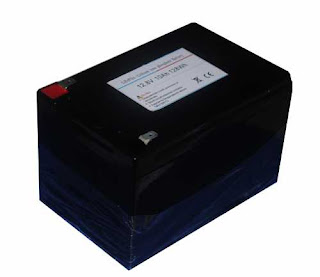Battery Lose Effectiveness Modes
Battery Lose Effectiveness Modes
Since the plate type, production conditions, there are differences in usage, and ultimately lead to the battery '> reasons for battery failure is also different, back satisfied them, there are several Lose Effectiveness modes:
1.Corrosion deformation of the positive electrode plate board gate
Alloy currently used on the production of three types of traditional lead-antimony alloy, antimony or ultra-low antimony alloy, lead-calcium. The three cast alloy grid, the battery charging process will be oxidized to lead sulfate and lead dioxide, leading to the loss of the role of supporting the active material of the battery failure; after corrosion due to the formation of lead dioxide layer, of lead alloy to produce stress, the linear grid grow up deformed, and finally the destruction of the whole plate, the active material and grid off poor contact or short circuit at the bus.
2.The positive electrode active material shedding, softening
In addition to grid grow active material loss caused by the outside, with repeated charging and discharging, a combination of lead dioxide between the particles are slack, soften, falling off from the plates. Plate manufacturing, assembly and elastic charge-discharge range of factors, all of the positive electrode active material softening, shedding affected.
Alloy currently used on the production of three types of traditional lead-antimony alloy, antimony or ultra-low antimony alloy, lead-calcium. The three cast alloy grid, the battery charging process will be oxidized to lead sulfate and lead dioxide, leading to the loss of the role of supporting the active material of the battery failure; after corrosion due to the formation of lead dioxide layer, of lead alloy to produce stress, the linear grid grow up deformed, and finally the destruction of the whole plate, the active material and grid off poor contact or short circuit at the bus.
2.The positive electrode active material shedding, softening
In addition to grid grow active material loss caused by the outside, with repeated charging and discharging, a combination of lead dioxide between the particles are slack, soften, falling off from the plates. Plate manufacturing, assembly and elastic charge-discharge range of factors, all of the positive electrode active material softening, shedding affected.
3.Irreversible sulfation
Battery discharge, discharge after long-term storage or storage in a discharged state, the plate will dissolve lead sulfate, recrystallization born under one kind of thick, hard to accept the charging of lead sulfate crystals, this phenomenon becomes irreversible sulfation . Severe electrode degradation, can not be charged.
4.Premature loss of capacity
When used as a low-antimony or lead-calcium alloy grid, the battery used in the early stages (about 20 cycles), the emergence of the phenomenon of sudden drop in the capacity of the battery failure.
5.Antimony serious accumulation on the active substance
Antimony positive electrode plate with the charging and discharging cycle, is oxidized to ionic moiety, with the electrolyte to reach the anode active material reduction due to hydrogen ion electrolyte antimony easier than hydrogen reduction born on lead, antimony therefore after accumulation, when most of the current battery charge are used for water decomposition, the battery is not charging properly and failure.
6.Thermal runaway
Since the charging voltage is too high, the current is too large, causing the battery temperature, battery ultimate deformation, cracking and failure.
7.Negative strap corrosion
Under normal circumstances, there is no bus low corrosion problems, but in the valve-sealed batteries, when creating oxygen cycle, the battery upper space filled with basic oxygen, electrolyte separator may also climb along the tabs on the bus, bus alloy will be oxidized naturally lead sulfate, if the bus electrode alloy inappropriate choice of impurities and crevice corrosion along these cracks will deepen, causing the lug and bus disengaged negative plate failure.
8.Membrane perforation caused by a short circuit
Individual species diaphragm aperture greater use may cause a big hole, the active materials can pass through the large hole in the charge and discharge process, resulting in micro-short circuit, the battery failure.
Battery discharge, discharge after long-term storage or storage in a discharged state, the plate will dissolve lead sulfate, recrystallization born under one kind of thick, hard to accept the charging of lead sulfate crystals, this phenomenon becomes irreversible sulfation . Severe electrode degradation, can not be charged.
4.Premature loss of capacity
When used as a low-antimony or lead-calcium alloy grid, the battery used in the early stages (about 20 cycles), the emergence of the phenomenon of sudden drop in the capacity of the battery failure.
5.Antimony serious accumulation on the active substance
Antimony positive electrode plate with the charging and discharging cycle, is oxidized to ionic moiety, with the electrolyte to reach the anode active material reduction due to hydrogen ion electrolyte antimony easier than hydrogen reduction born on lead, antimony therefore after accumulation, when most of the current battery charge are used for water decomposition, the battery is not charging properly and failure.
6.Thermal runaway
Since the charging voltage is too high, the current is too large, causing the battery temperature, battery ultimate deformation, cracking and failure.
7.Negative strap corrosion
Under normal circumstances, there is no bus low corrosion problems, but in the valve-sealed batteries, when creating oxygen cycle, the battery upper space filled with basic oxygen, electrolyte separator may also climb along the tabs on the bus, bus alloy will be oxidized naturally lead sulfate, if the bus electrode alloy inappropriate choice of impurities and crevice corrosion along these cracks will deepen, causing the lug and bus disengaged negative plate failure.
8.Membrane perforation caused by a short circuit
Individual species diaphragm aperture greater use may cause a big hole, the active materials can pass through the large hole in the charge and discharge process, resulting in micro-short circuit, the battery failure.
This article comes from http://www.storagebattery-factory.com/news/battery-lose-effectiveness-modes.html





Comments
Post a Comment